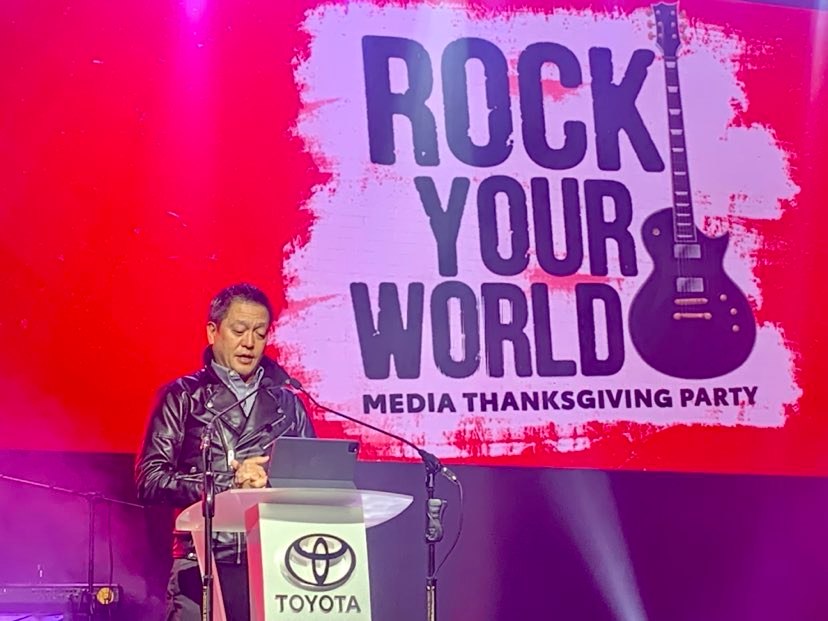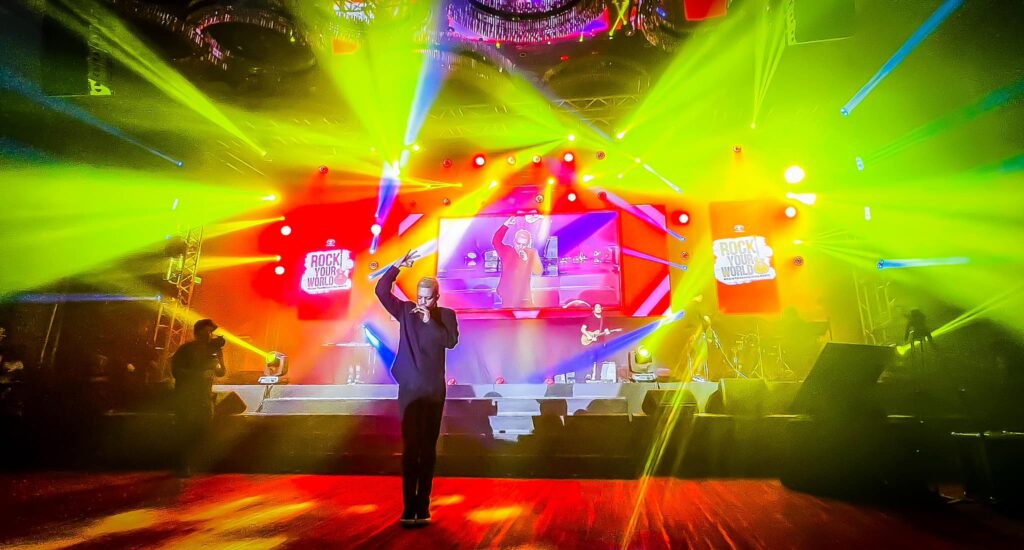Monday, the solemn start of the work week, is usually the last day you’ll think of to hold a party. But when you’re an industry leader that’s been head and shoulders above the competition for so long, Monday blues won’t matter at all. You’d rather start the week rocking. And that’s what Toyota Motor Philippines (TMP) did on Feb. 13 when it held its media appreciation night, themed “Rock Your World”, at the grand ballroom of the Grand Hyatt Manila in Taguig City.
TMP spared no expense, and the night’s highlight performer, iconic rock frontman Bamboo Manalac (who ordered vegan dishes for himself, by the way), perhaps sang the song that most aptly symbolized its 50-percent market dominance in 2022. “Elesi”, the Tagalog word for “propeller”, has the line that says, “Kumapit ka kaya/Sa akin nang ikaw ay/Maitangay sa kalayaan ng ligaya (Won’t you hold on to me/That I may sweep you away/to the freedom of joy).”
Half of last year’s car buyers in the Philippines, indeed, held on to their new Toyotas and were transported to some kind of joyful motoring experience.
However, the silver lining also had its clouds. Toyota is caught in the middle of a simmering tug-of-war between two technologies, the traditional internal combustion engines (ICEs) and the emerging battery-electric vehicles (BEVs), with many pundits taking potshots at the carmaker for acting “slow” in adopting EV technology. Then, in a surprise move last Jan. 26, 66-year-old Akio Toyoda announced he was stepping down as its president and CEO effective April 2023, with successor Koji Sato taking over the post and Toyoda assuming chairmanship of the board.
As one of the world’s most prolific carmakers, getting into some turbulence should be par for the course. Again, the song “Elesi” comes to mind. “Pag komplikado ang problema/Parang relong made in Japan (If the problem’s too complicated/like a watch made in Japan).”
Yes, the world of mobility is in a state of flux, turbulence, complications, like air rushing into propellers. But it’s the way forward.


The Japanese carmaker has had to deal with two major disruptors in the past three years. One was the pandemic, which Toyota got through with flying colors, keeping its supply chains relatively steady in 2020 and 2021 to keep its title as the world’s top-selling automaker. The more contentious one has been the shift to new-energy vehicles, and Toyota has seemingly gone against the popular convention that EVs are the next big thing, sticking to its market-tested hybrid technologies and insisting on its proprietary hydrogen-powered technology.
Toyota has survived more troubling times in its long history, and every time, it has come out even stronger. When Toyoda took over as president in 2009, Toyota was on the brink of a catastrophic recall impacting millions of its vehicles (it eventually posted a record loss of 392 billion yen by the end of that year). In 2011, the Japanese earthquake and the tsunami up-ended Japan’s automobile production.
Under the 53-year-old Sato’s leadership come April, 84-year-old Toyota will again be looked upon to lead the industry through a historic shift to new-energy vehicles. The question is, what kind of new-energy vehicles will emerge from Toyota’s assembly lines?
But in the here and now, Toyota’s hybrid technology takes center stage. Consumer Reports’ “10 best cars of 2023” is dominated by electrified cars (seven of them are either hybrids and EVs), with three Toyota models on the list (four if you include Lexus): Toyota Corolla Hybrid, Toyota Corolla Cross, Toyota Camry Hybrid, and the Lexus NX350h Hybrid.
P4.4-B investment
During his speech at the media thanksgiving night, TMP president Atsuhiro Okamoto (in full rock wardrobe) revealed that TMP had recently signed a Letter of Intent with the government, whereupon the automaker would be investing P4.4 billion “for the sustained local production at the Santa Rosa (plant) and in the Philippines.”
Okamoto added that the multi-billion-peso infusion would fast-track the development of light commercial vehicle (LCV) production, and help the government “make the country an investment destination.”
Okamoto then said: “Another very exciting prospect for us is the step-up in our journey towards carbon neutrality. We join the government in their goal of achieving carbon neutrality and securing the country’s energy needs. As we have repeatedly shared, we believe that this journey is better served by providing multiple pathways towards electrification. Toyota’s belief is simple: ‘No one left behind’. We aim to provide electrified solutions to as many car owners and users as possible depending on their preparedness in terms of owning, using and enjoying their electrified car-of-choice.”
The “multiple pathways” Toyota aims to offer for its millions of consumers worldwide involve developing more hybrids and plug-in hybrids, along with a few battery-EVs. Plans include expanding its electrified portfolio to about 70 models by 2025, with seven BEVs in the mix. Motortrend, on the other hand, reported that by 2030 Toyota would be aiming for 30 EV model offerings and global annual EV sales of 3.5 million.
Proving that the Toyota Prius hybrid was well ahead of its time, Toyota hinges much of its future three to five years down the line on the iconic hybrid that started it all. The Prius, which has been included in the book “Fifty Cars That Changed The World” by The Design Museum, was the late Toyota chair (and Akio’s father) Dr. Shoichiro Toyoda’s answer to the worsening C02 emissions that were already adversely affecting global climate in the late 20th century.
Back when it was introduced, the Prius was often criticized and belittled. But then it became one of Toyota’s best selling cars. Now, full electrification is receiving the same flak. But again, that’s par for the course for Toyota.
Like an elesi, when you’re leading, you get the most resistance.










